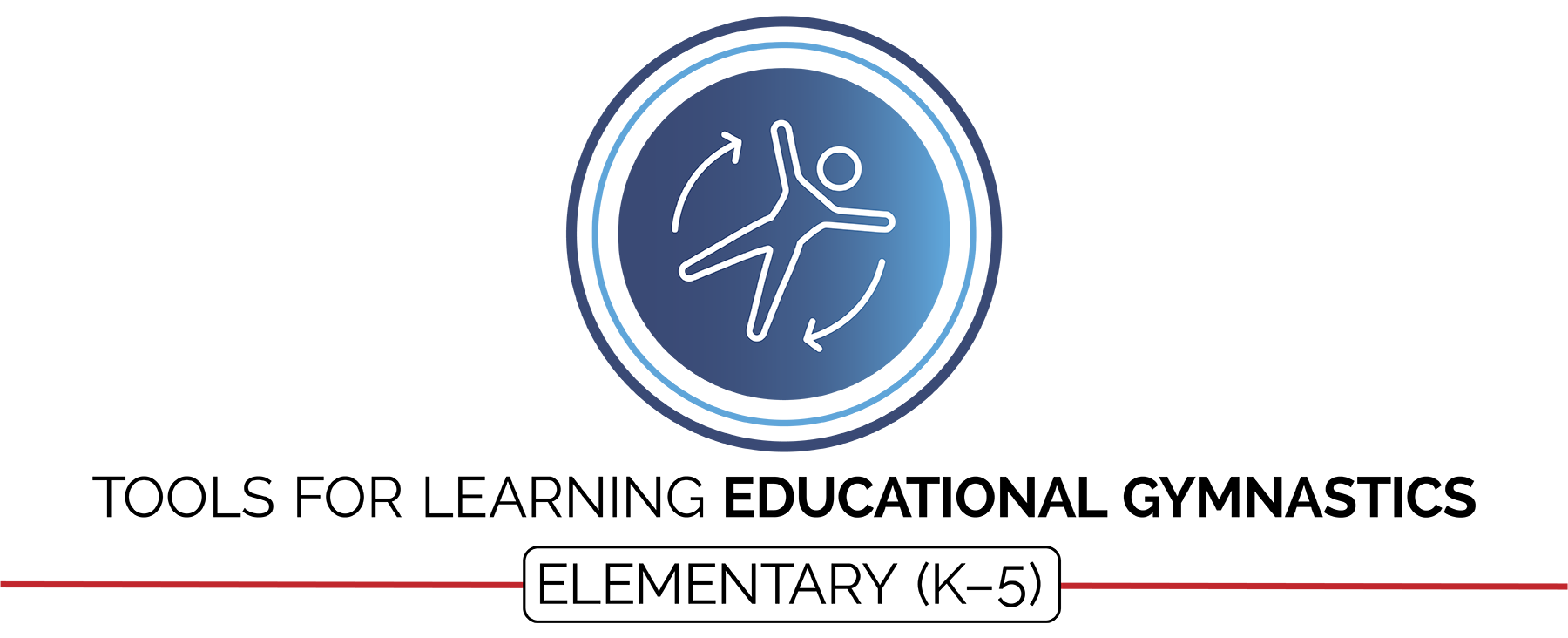Created by: Nichole Wilder
Special Contributions: Andrea Hart
Design: Jennifer Truong & Aaron Hart
This module includes activities that are designed to develop movement concepts and body control. Educational gymnastics is not the same type of gymnastics seen on TV during the Olympics. It focuses on teaching introductory skills and concepts in a safe way related to traveling, balancing, rolling, and the transfer of weight. High level skills that require advanced spotting techniques (e.g., back handsprings) are not included as a part of this educational gymnastics module. Our focus remains on safe movement exploration versus competitive gymnastics proficiency. Activities in this module provide fun challenges to students of all ability levels with safety always the priority.
Module Documents
Complete Module Packet:
Module Overview:
Required Materials:
All Module Activities:
Sample Lesson Plan:
Academic Language Cards:
Balancing Act Activity Card:
The Equalizer Activity Card:
Rocking and Rolling Station Cards:
Step It Up Activity Card:
Mix and Match Activity Card:
Gymnastics Cards:
Universal Design Adaptations:
Safety Checklist:
Activity Plans
Balance Tag:
Balancing Act:
The Equalizer:
Leaps and Bounds:
Rocking and Rolling:
Step It Up:
Mix and Match:
Assessments
Self-Assessment Worksheet:
Holistic Performance Rubric:
Holistic Dual Performance Rubric:
Academic Language Quiz:
Teacher Evaluation
Teacher Self-Evaluation/Reflection Guide:
Can’t see the file links? Register for FREE today to access all of the modules. SIGN UP HERE
Priority Outcomes Focus for Educational Gymnastics
Values Physical Activity
- Personal Challenge. (K) Acknowledges that some physical activities are challenging/difficult. (1) Recognizes that challenges can lead to success. (2) Participates in physical activities that bring confidence and challenge. (3) Discusses the challenge that comes from learning new physical activities. (4) Rates the enjoyment of participating in challenging and mastered physical activities. (5) Expresses the enjoyment and challenge of participating in a favorite physical activity.
Movement Skills & Concepts
- Locomotor Skills. (K) Performs locomotor skills with balance. (1) Travels with balance using a variety of locomotor skills in dynamic environments. (2) Performs locomotor skills using a mature pattern and in rhythm. (3) Performs locomotor skills with balance at various speeds.
- Non-Locomotor Skills. (K) Maintains momentary stillness on different bases of support. (1) Transfers weight from one body part to another in self-space. (2) Combines balances and transfers in purposeful movement sequences. (3) Combines balance and weight transfers with movement concepts. (4) Combines traveling with balance and weight transfers. (5) Combines actions and traveling with movement concepts to create movement sequences.
Demonstrates Fitness Knowledge
- Fitness Knowledge. (K) Recognizes that when you move fast, your heart beats faster and you breathe faster. (1) Identifies the heart as a muscle that grows stronger with exercise/play and physical activity. (2) Identifies physical activities that contribute to fitness. (3) Describes the concept of fitness and provides examples of physical activity to enhance fitness. (4) Identifies the component of health-related and skill-related fitness. (5) Identifies activities that require and/or improve the components of fitness.
Demonstrates Responsible Behaviors
- Personal Responsibility & Safety. (K) Follows directions for safe participation and proper use of equipment with minimal reminders. (1) Follows directions for safe participation and proper use of equipment without reminders. (2) Works independently and safely in physical education. (3) Works independently and safely in physical activity settings. (4) Exhibits responsible behavior in independent group situations. (5) Engages in physical activity with responsible interpersonal behavior (e.g., peer to peer, student to teacher).

